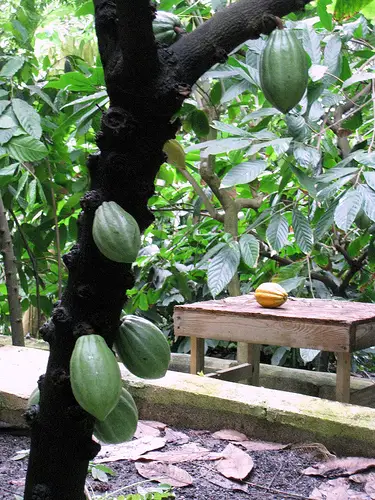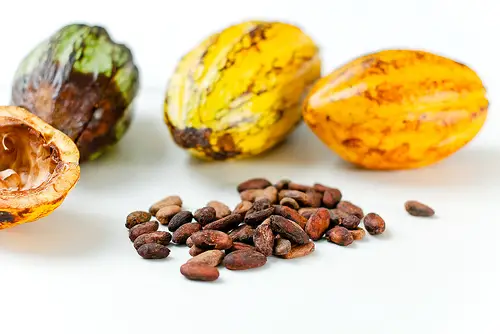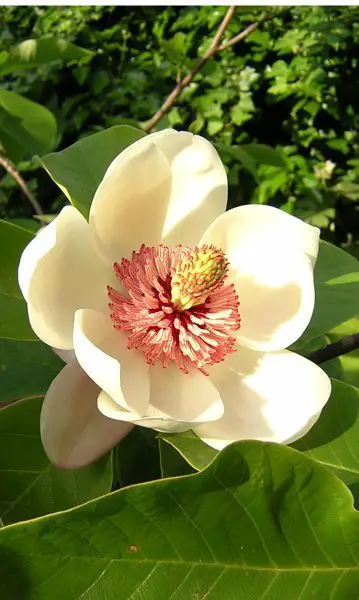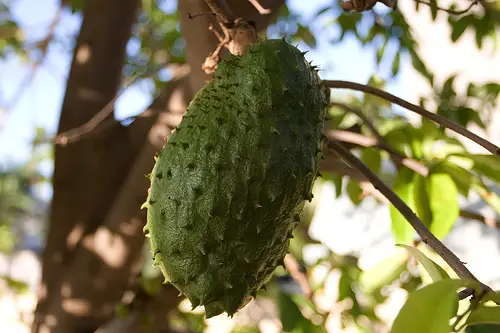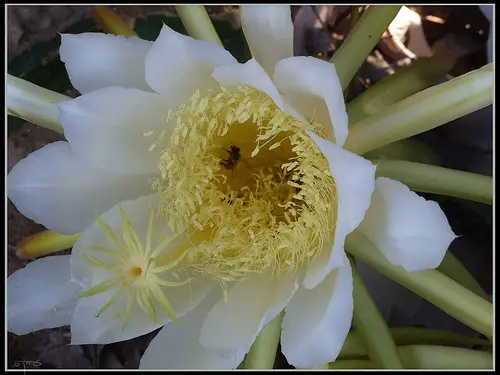Cocoa Tree
Also known as the cacao or cocoa tree, Theobroma cacoa is a small, evergreen tree that is native to the deep tropical regions of the Americas. It grows up to only 4 to 8 metres tall, and is famous around the world for its seeds which are used to make chocolate and cocoa powder. Its scientific name, Theobroma, means “Food of the Gods”. Cocao is derived from the Aztec language of Nahuatl, where they called it cachuatl. This was learned by the Spanish when they conquered them.
The cocoa tree was originally domesitacted in the Amazon. It was then distributed by humans throughout Mesoamerica and Central America. Today, the cocoa tree is found grwoing in the wild at the foothill of the Andes mountain, at about 200 to 400 metres above ground. It is also found in the Amazon and Orinoco river basins.
In order for the tree to grow well, it needs a humid climate, regular rainfall, and good soil. It is an understory tree which grows best with some shade. Its leaves are between 10 to 40 cm long, and 5 to 20 cm wide. Its flowers are produced in clusters on both the trunk and older branches. They have a pink calyx and are really small at only 1 to 2 cm in diameter. Although most flowers around the world are pollinated by bees, the cocoa tree’s flowers are actually pollinated by tiny flies called Forcipomyia midges.
Cacao pods are the fruit of this tree, and are oval in shape. They are about 15 to 30 cm long and between 8 to 10 cm wide. When ripening, they turn from yellow to orange and they weigh about 500g when they are ripe. A pod contains between 20 to 60 seeds, and are called “beans”. These cocoa beans are embedded in a white pulp. Each seed contains about 40 to 50% fat, and this is known as cocoa butter around the world.
As mentioned above, the cacoa was cultivated for cultural purposes extensively in Mesoamerica. There are 22 species in the Theoborma genus, although Theobroma cacao is the most famous. The Mayans believed that cacao was discovered by the gods in a mountain that also contained many delicious foods. Sadly, it was only consumed by men as it was thought to be toxic for women and children.
There are several types of cacoa mixtures described in ancient text for medicinal, ceremonial, and culinary purposes. Some mixtures include vanilla, chili, maize, peanut butter, and honey. It was also thought to be ground by the Aztecs and mixed with tobacco for smoking purposes. Cacao beans were so important in pre-Columbian Mesoamerican civilisations, that it became a major currency system as well as a ritual beverage. Back in those days, 80 to 100 beans would buy you a cloth mantle. Believe it or not, some people tried to counterfeit the cacao bean during the Aztec empire. It was also used in some places such as Yucatán, in place of a small coin up until the 1840’s.
